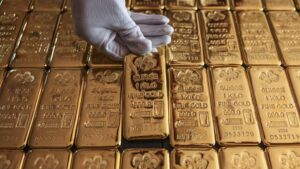The Evolution of Gold Investment: Celebrating 20 Years of the GLD ETF
In the world of investing, few assets have stood the test of time quite like gold. For over two decades, the introduction of the Gold Exchange Traded Fund (ETF) by SPDR Gold Shares (GLD) has revolutionized how investors approach this precious metal. At Extreme Investor Network, we delve into the insights from industry experts and the implications for both new and seasoned investors as we celebrate 20 years of the GLD ETF.
A Bullish Outlook from the Pioneer
George Milling-Stanley, the chief gold strategist at State Street and one of the visionaries behind the GLD ETF, recently shared his optimistic perspective on gold’s future during an interview on CNBC’s "ETF Edge." He emphasized that the outlook for gold remains strong through the end of the year and into 2024. His endorsement bears weight, considering his extensive expertise and the significant market shifts observed since the GLD’s inception.
Milling-Stanley pointed to the rising demand for gold among central banks and individual investors, especially in emerging markets like India and China. These regions are not merely casual participants; they represent a seismic shift in gold investment patterns that could forecast an ongoing bull run for the commodity.
Navigating Market Volatility: A Safe Haven
Despite moments of volatility and a recent pullback in gold futures, the precious metal—and by extension, the GLD ETF—has demonstrated its resilience. The post-election economic environment saw a classic “risk-on” mentality, propelling stocks and cryptocurrencies higher. However, Milling-Stanley reassures investors that gold remains a critical part of diversified portfolios, with the GLD ETF beginning to recover ground lost during this period.
“Gold continues to claw back,” he noted, underscoring how the intrinsic value of gold as a safe haven asset persists, even amidst shifting market conditions.
Transformative Impact on Gold Ownership
Since its launch, the GLD ETF has fundamentally altered how individuals and institutions invest in gold. The transition from primarily jewelry purchases to investments in bullion and ETFs represents a monumental shift in the investment landscape. Todd Sohn, an ETF and technical strategist at Strategas, echoes this sentiment, recognizing that the GLD ETF has democratized access to gold investing.
“No matter what your end game is, GLD allowed you to add gold to your portfolio alongside equities and fixed income instruments, creating diversification opportunities that were previously limited,” Sohn explains.
Impressive Returns: A Testament to Gold’s Value
The performance of the GLD ETF speaks volumes to its success. Since its inception, it has surged an impressive 451%, demonstrating a unique resilience and long-term growth potential. Moreover, with a 29% increase in 2024 alone, it showcases gold’s enduring role as a robust investment vehicle, particularly in times of economic uncertainty.
Why Choose Extreme Investor Network?
As you consider integrating gold into your investment strategy, remember that informed decisions are vital. At Extreme Investor Network, we are committed to providing deeper insights, expert analyses, and data-driven strategies to empower your financial journey. Our community is dedicated to navigating the complexities of investment landscapes, ensuring you have the resources to make savvy decisions that align with your financial goals.
Whether you’re a seasoned investor or just starting, the GLD ETF offers a unique pathway to harness the value of gold. Join us as we celebrate its 20 years of impact and explore the promising landscape ahead.
Disclaimer: The information provided in this article is for educational purposes only and should not be considered investment advice. Always conduct your own research or consult with a financial advisor before making investment decisions.

